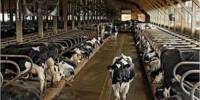A KAUST-led team has created the first comprehensive genome map of the historic grain einkorn, enhancing the Middle East’s standing as one of the historical hubs for cereal crop domestication.
The work is published in the journal Nature.
The 5.2 billion-letter sequence offers a window into the historical development of many wheat species. Develop bread wheat varieties with greater disease resistance, higher yields, and improved hardiness with the assistance of crop breeders and farmers.
“By understanding the genetic diversity and evolutionary history of einkorn, researchers can now leverage its potential for future breeding efforts and the development of more resilient and nutritious wheat varieties,” says Hanin Ahmed, one of the study’s first authors, and a former Ph.D. student at KAUST.
One of the world’s earliest domesticated grains, einkorn was first grown in the Middle East’s rich regions more than 10,000 years ago. Einkorn, also known as Triticum monococcum, is still eaten today and is cherished for its distinct flavor and myriad nutritional advantages.
However, as the demand for bread wheat has grown over the centuries, its importance in the world’s food output has increasingly decreased.
Varieties of bread wheat typically yield more, which makes them more economically feasible for large-scale commercial agriculture. However, modern bread wheat has less genetic diversity than its wild relatives, and many breeders are increasingly worried about how current crops will fair in the face of climate change and new disease threats.
By understanding the genetic diversity and evolutionary history of einkorn, researchers can now leverage its potential for future breeding efforts and the development of more resilient and nutritious wheat varieties.
Hanin Ahmed
Enter einkorn. The ancient grain may contain the genetic information required to create bread wheat that can continue to feed the world’s expanding population because it has preserved a wider gene pool.
To unlock those secrets, a team led by Simon Krattinger and Jesse Poland from KAUST deployed a combination of DNA sequencing technologies to create high-quality genome assemblies for wild and domesticated einkorn varieties alike.
Prior to now, scientists had thought that the development of wheat had been a slow, consistent process with little mixing of other wheat species.
But, according to Krattinger, “Our genomic analyses now show that the history of wheat is much more complex and involved a lot of mixing and gene flow between different wheat species,” including einkorn, which likely grew in close proximity to other wheat varieties, leading to DNA mixing between the two closely related species that remains evident to this day.
Just as the human genome contains sequences from our Neanderthal cousins, so too is the modern bread wheat genome littered with remnants of einkorn DNA.
Indeed, the introduction of einkorn genes in the past may have played a role in assisting bread wheat to adapt to changing climatic conditions, Krattinger notes. And if history is any indicator, the same might be true in the future, particularly with the help of contemporary molecularly guided breeding methods.
“Our lab’s resources will help to precisely transfer beneficial genes from einkorn into bread wheat,” Krattinger says.
















